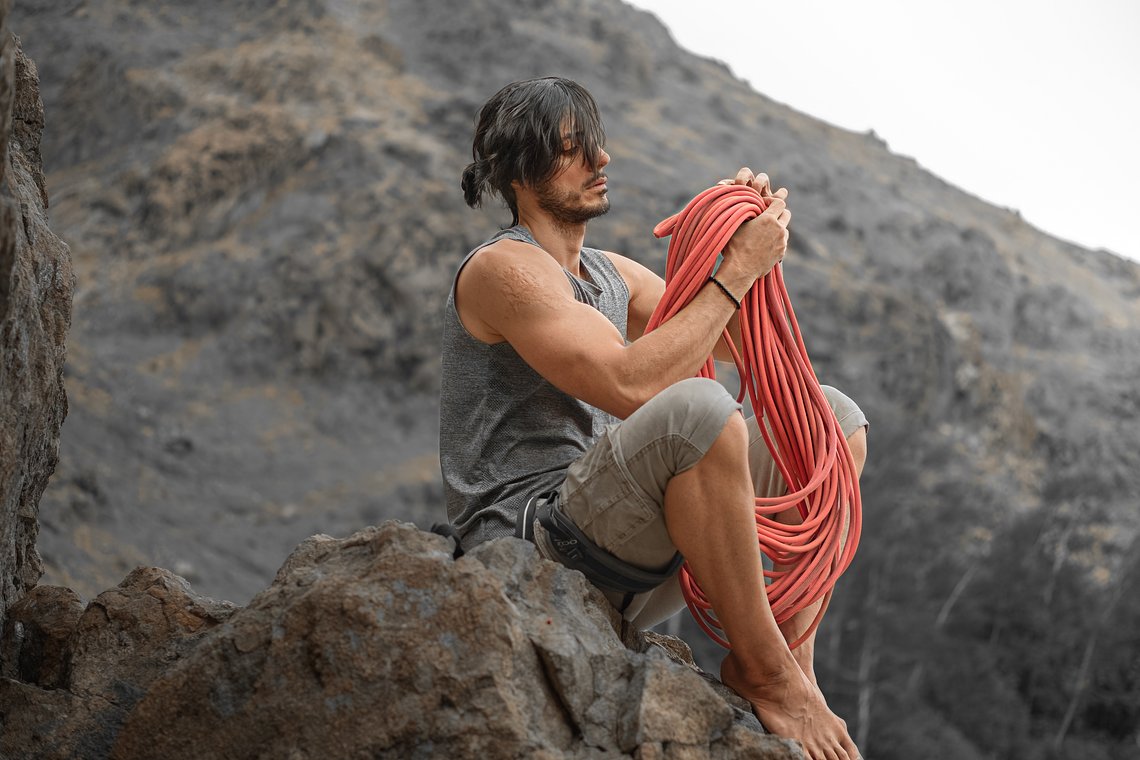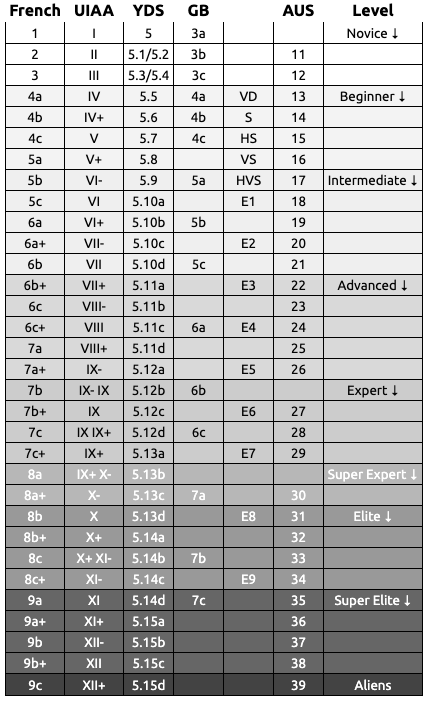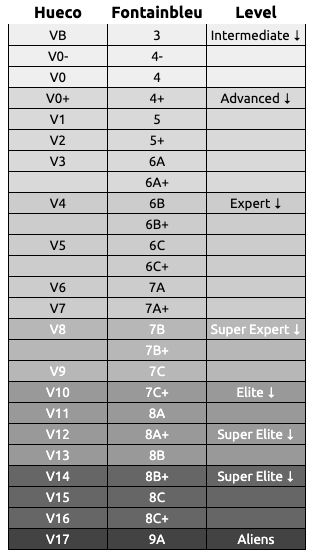Climbing grades at popular systems
In free climbing, different grading systems exist to provide climbers with a standardized way to communicate and compare the difficulty of climbing routes. These grading systems help climbers understand the challenges they may encounter on a particular route and allow them to make informed decisions about their climbing abilities and goals.

 by Mavi
·
Sun 2 Jul 2023
by Mavi
·
Sun 2 Jul 2023
However, in different part of the world grading systems may differ. In this blogpost we publish a comparative analysis of the 5 most popular systems.
It's important to note that while grading systems serve as a helpful reference, they are not absolute measurements of difficulty. Climbing grades are contextual and can vary between areas and individual routes. Climbers should use grading systems as a starting point and consider other factors such as route length, terrain, protection, and their own experience when assessing the suitability of a climb.
Roped climbing
- French - The French system is an internationally recognised system for grading sport climbs and is therefore used on bolted routes in various countries in Europe. It is starting to get also used for classic trad routes.
- UIAA - This system is used in Germany, in other areas of Eastern Europe and in Italy for the classic trad routes.
- United States Yosemite Decimal System(YDS) - This is a grading system commonly found in the United States, starts with a 5.something. Grades 1 to 4 refer to walks of increasing difficulty, by the time you reach 5 you are assumed to be scrambling over rocks which equates to about 5.0. Sub-Grade (Yosemite Decimal System). The sub-grade ranges from 1 to a theoretically infinite number (today the highest number is 15). The number is increased when a ‘harder’ climb is developed.
- Great Britain - The UK system is made of two sub-grades, an adjective grade, and a technical grade. The adjective grade describes the overall difficulty of the climb taking into consideration how strenuous the route is, the amount of exposure, and the availability of protection. The adjective grades are as follows: Moderate (M), Very Difficult (VD), Hard Very Difficult HVD), Mild Severe (MS), Severe (S), Hard Severe (HS), Mild Very Severe (MVS), Very Severe (VS), Hard Very Severe (HVS) and Extremely Severe. The Extremely Severe grade is also broken down into 10 further sub-grades from E1 to E11. The numerical technical grading describes the hardest (crux) move on the climb. For a brief explanation of UK traditional climbing grades follow this link.
- Australian - The system used in Australia and New Zealand is perhaps the most logical of all. There are no letters in secondary grades, just a single number that gets bigger as the routes get harder.

Bouldering
In the sport of bouldering, problems are assigned technical grades according to several established systems, which are often distinct from those used in roped climbing. Bouldering grade systems in wide use include the Hueco “V” grades (known as the V-scale), Fontainebleau technical grades, and more. You can read a very detailed article about bouldering grades here: www.99boulders.com. There are also other systems used around the world to grade rock climbs.

